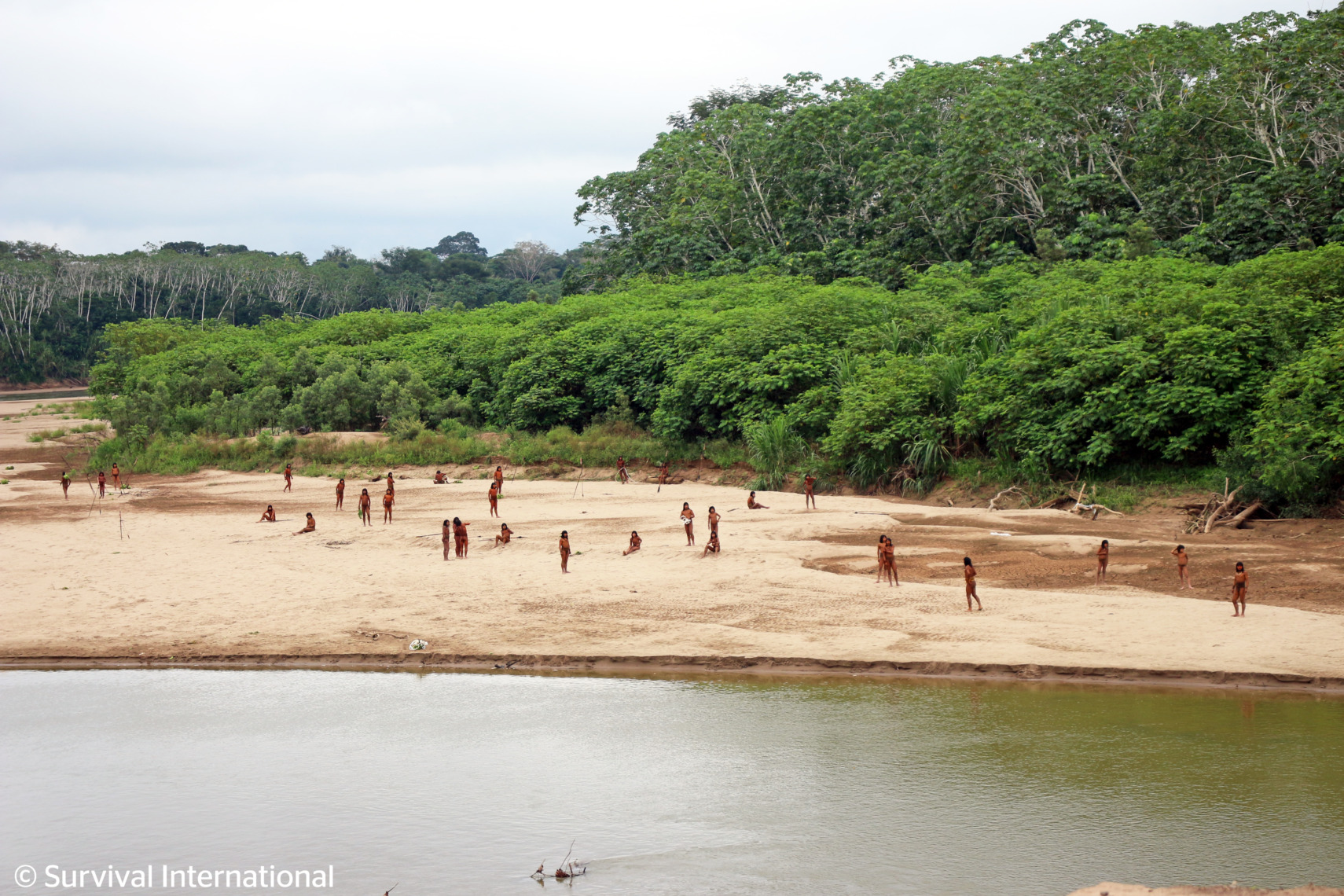
In late June 2024, a large group of Mashco Piro men appeared along the upper Las Piedras River, in the southern Peruvian Amazon (see photo), near the Yine Indigenous community of Monte Salvado.
The Mashco Piro are one of the largest and most emblematic uncontacted Indigenous groups in the world. They live in voluntary isolation in this remote but increasingly threatened area.
The photos and videos of this encounter, released by the organization Survival International, have generated worldwide news about the event.1
On the one hand, local experts and Indigenous representatives indicate that the Mashco Piro were likely searching the exposed riverbanks for turtle eggs, a usual occurrence that time of year when river levels are low.
On the other hand, the encounter also highlighted that the Mashco Piro are increasingly threatened by external pressures, especially by logging concessions granted by the Peruvian government.
In 2002, the Peruvian government created the Madre de Dios Territorial Reserve to protect part of the Mashco Piro territory. However, some of their ancestral territory was left out and granted to logging companies.
Here, we analyze and illustrate the conflict caused by these logging concessions (and their logging roads) in the ancestral territory of the Mashco Piro.
Base Map of the Encounter Area
The Base Map shows the general area where the Mashco Piro recently appeared along the upper Las Piedras River (see “Encounter Area”) in relation to the Madre de Dios Territorial Reserve, logging concessions, and logging roads.

Logging Concessions
As mentioned above, although the government created the Madre de Dios Territorial Reserve to protect part of the Mashco Piro territory, their ancestral territory extended over areas now covered by logging concessions, causing the current context of risk and conflict. Much of the area east of the Madre de Dios Territorial Reserve is subject to legalized logging in the ancestral territory.
Survival International’s press release made special note of the fact that some of the companies operating in Mashco Piro territory are additionally legitimized through certificates of sustainable origin and respect for human rights, in particular the concession operated by the company Canales Tahuamanu S.A.C.
Despite its controversial location next to the Madre de Dios Territorial Reserve, this concession is certified by the Forest Stewardship Council (FSC) as a responsible forestry operation that is environmentally appropriate and socially beneficial.
In contrast, the Indigenous Federation FENAMAD (Native Federation of the Madre de Dios River and Tributaries) points out that this concession is within the proposed expansion zone of the Madre de Dios Territorial Reserve, given its importance for the Mashco Piro and the high probability of conflict.
Logging Roads
We also highlight the recent expansion of logging roads,2 which is our best proxy for actual logging activity.
We indicate the most recent logging roads, built between 2020 and 2023, in red. Of these, we estimate the construction of over a thousand kilometers (1,013 km) in the logging concessions east of the Madre de Dios Territorial Reserve.
Most notably, we detect the recent construction of 110 kilometers of new logging roads in the FSC-certified concession operated by Canales Tahuamanu, adjacent to the Madre de Dios Territorial Reserve.
Notes
1 Examples of global coverage on the encounter include CNN, Reuters, and BBC. The original press release was produced by Survival International, and the photos and video they released can be viewed here.
2 Data for logging roads obtained from MOCAF (Monitoreo de Caminos Forestales), an initiative developed by the organization Conservación Amazónica to specifically track logging roads in Peru, within the SERVIR Amazonia Program.
Citation
Finer M, Ariñez A (2024) Uncontacted Indigenous group threatened by logging in the southern Peruvian Amazon. MAAP: 216.




















